Irish Soda Bread is the ultimate quick bread to use as a side for soups, stews, and all sorts of meals. There’s no yeast so there’s no waiting. Just mix and bake! This traditional recipe delivers a crispy, golden crust with a soft, tender inside that’s just begging for a smear of butter.
Why Our Recipe
- Super easy, no yeast, and ready in under an hour. Just mix, shape, and bake!
- Crispy crust, soft inside which is perfect for slathering with butter.
- Keep it plain or add raisins and/or caraway for extra flavor.
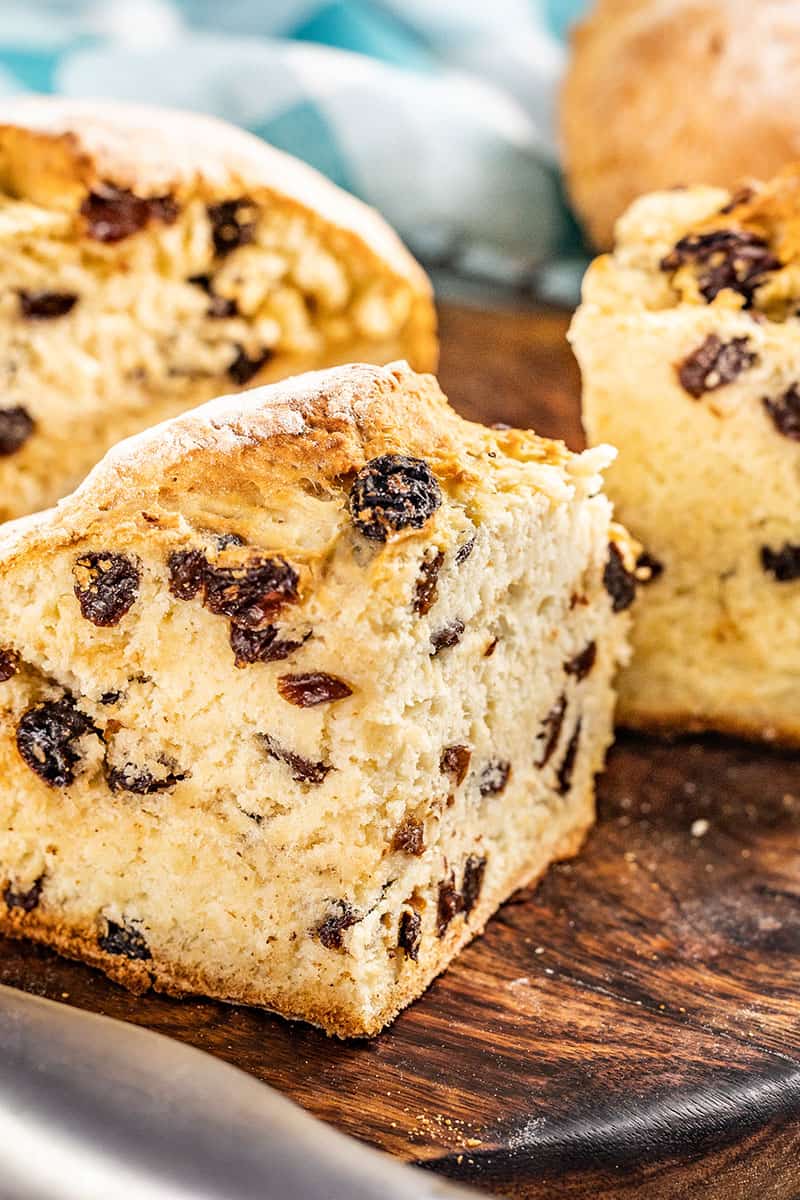
This bread is a go-to for me for a lot of reasons. It uses pantry staples I always have on hand and I can have warm, fresh bread on the table in under an hour. Adding raisins is traditional, and so is caraway, but you can always leave it plain. We particularly love this bread with caraway for extra flavor.
Ingredient Notes
- All-Purpose Flour: You start with 2 ½ cups and then add more as needed. Too much flour will make the bread dense, so add gradually.
- Salt: This bread is salty and savory. If you prefer less, you can reduce it to 1 teaspoon.
- Baking Soda: Make sure that baking soda is fresh because this is where the rise comes in without yeast.
- Buttermilk: If you don’t have buttermilk, mix 1 ½ cups milk with 1 ½ tablespoons lemon juice or vinegar and let it sit for 5 minutes.
- Raisins: Traditional in Irish soda bread! Use regular or golden raisins, or swap them for currants. Or leave them out entirely.
- Caraway Seeds: These add a slightly nutty, anise-like flavor which we love.
How Much Flour to Add
Flour amounts in bread recipes always vary a little because things like humidity and altitude can affect how much you’ll need. That’s why it’s best to start with the lower amount. In this case, we start with 2 ½ cups while you are still stirring, and add more flour while kneading.
The dough should be soft, slightly sticky, and easy to work with. If it’s too wet and sticks heavily to your hands or the counter, sprinkle in more flour a little at a time until it firms up. You want it tacky but not overly sticky. Be careful not to add too much, though! Extra flour can make the bread dense and dry.
Since Irish soda bread is a quick bread with no yeast, the dough will feel softer than traditional bread dough, and that’s okay. A little stickiness is normal, but it shouldn’t be dry or crumbly.
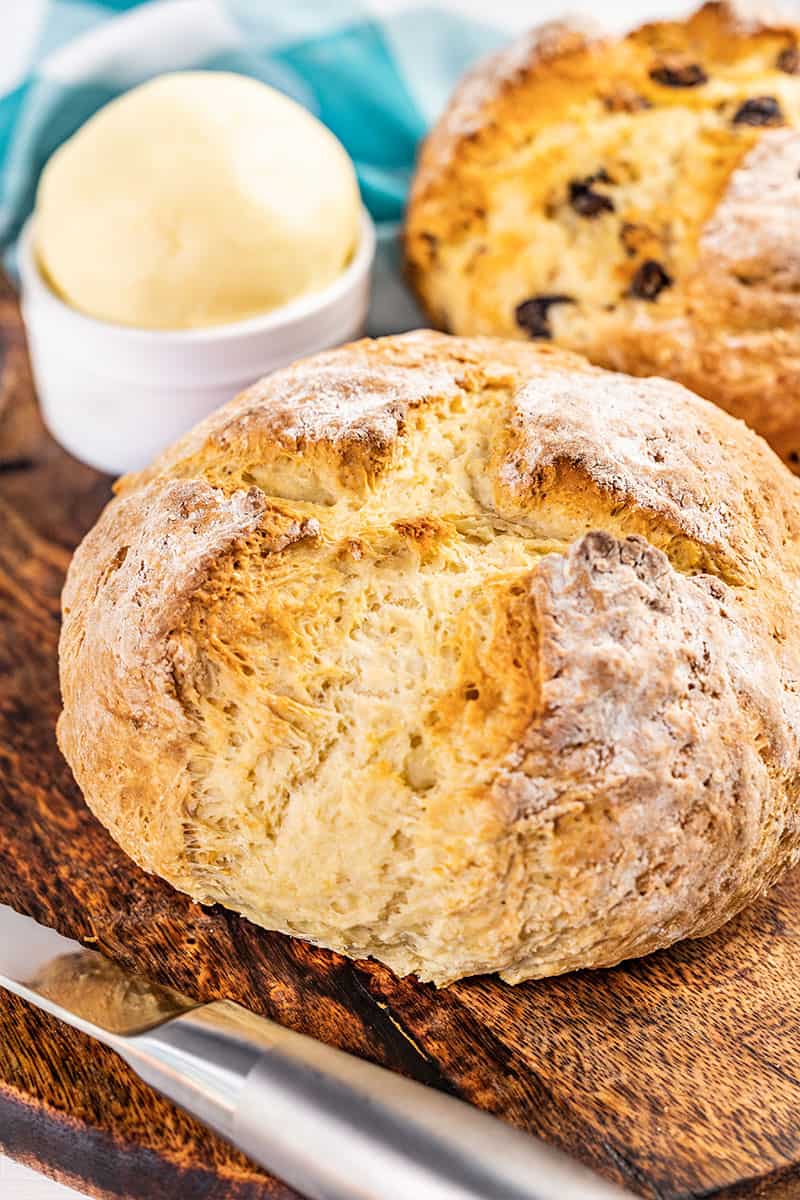
Raisins and Caraway: Optional
Raisins and caraway seeds are both traditional in Irish soda bread, but whether you add them is totally up to you! You can add both, just one, or skip them entirely—either way, this bread will turn out delicious!
Raisins add pops of sweetness that balances out the saltiness of the bread. Regular or golden raisins both work, or you can swap them for currants, which are slightly smaller and a little tangier. Not a fan of raisins? Feel free to leave them out.
Caraway Seeds bring a nutty, slightly anise-like flavor that gives the bread a more distinctive taste. They aren’t overpowering, but they do add noticeable flavor. If you’ve ever had rye bread, you’ll recognize the subtle hint of caraway. If you’re unsure, try adding just a little and see what you think!
What to Bake it On
You don’t need any fancy equipment to bake Irish soda bread, but different pans can change the crust and texture a bit.
Baking Sheet: The easiest and most common choice! A simple baking sheet lets the bread cook evenly and develop a crisp crust all around.
Cast-Iron Skillet: Want to go old-school? A cast-iron skillet holds heat really well, which helps create a beautifully golden, crisp crust—similar to how it was traditionally baked.
Dutch Oven: If you like a softer crust, baking in a Dutch oven with the lid on traps steam, which makes the bread extra tender. This mimics the Irish “bastible” method.
Storage Instructions
Irish soda bread is best enjoyed fresh. Store leftovers at room temperature in an airtight container, plastic bag, or wrapped tightly in plastic wrap. It will stay fresh for 2 to 3 days.
More easy bread recipes…
Flaky Old Fashioned Biscuits
25 mins
The Best Homemade Dinner Rolls Ever!
3 hrs 12 mins
Homemade Breadsticks
1 hr 18 mins
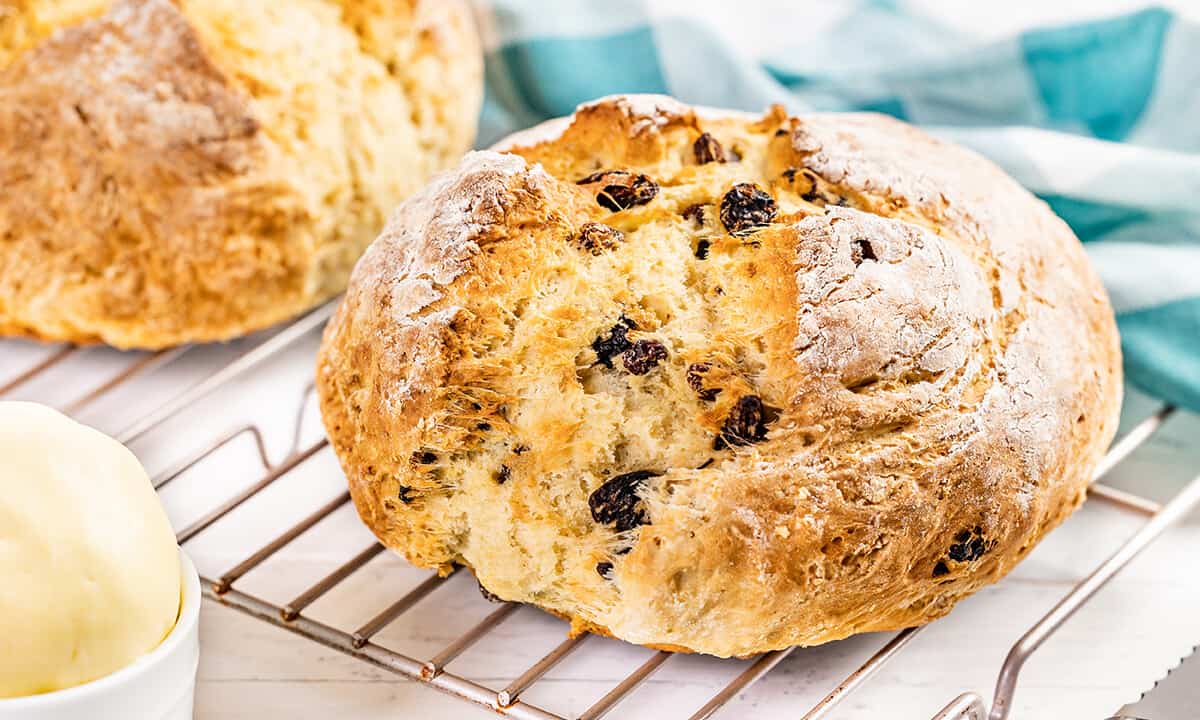
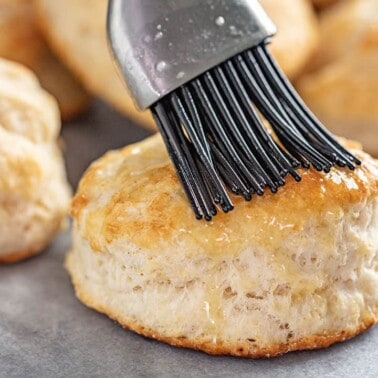

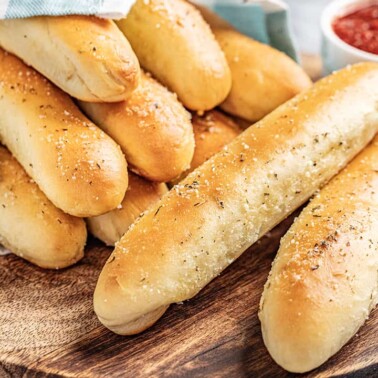
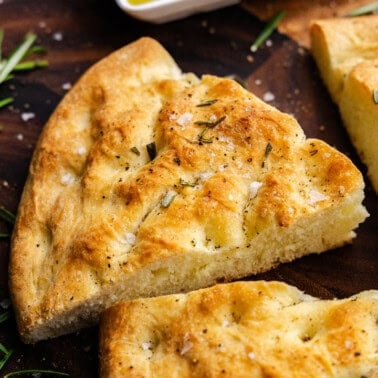
I decided to make this with my 7 year old granddaughter this afternoon. It was so easy and tasted so good. And a very good way to teach my granddaughter about making bread.
I had to rate this a 4 because the outside turned golden brown with 10 minutes left to go. I can’t imagine how hard the crust would have been!! The inside wasn’t done so we scooped that out and ate the rest.
Not sure what I could have done differently.
I’ll try again one day.
Sodium % is high. I love the simplicity and quickness in putting this recipe together. Look yummy. I will bake it and give feed back thank you
Love this
I did Carey seeds and raisins to mine My mother in-laws delicious recipe
Really enjoyed this recipe! I made it one night after work to go with dinner a couple of weeks ago, and I am going to make again tonight! I saw some of the other reviews saying they thought it was too salty; I used the course salt and, although I could somewhat taste it, I didn’t feel like it was too salty. I would imagine it depends on what type of salt you use and your personal preferences; not all salts are created equal in their ‘saltiness’.
Thanks for the recipe!
Love the Irish Soda Bread!!
How much salt did you use??
I really like how you make a cross on top of the loaf. That is very traditional. I love this bread served with butter and marmalade. When living in Ireland with two separate family’s of relatives, mother and father’s sides, my Aunts turned out bread on a daily basis. There is nothing so satisfying as a fresh loaf of easy to make soda bread. especially with a full Irish breakfast.
Perfect never-fail recipe, adjusted well to a combo of whole wheat and oatmeal flour! Only ingredient to adjust is salt! Love the taste of this bread!
Great recipe but can you do a recipe that includes wheat flour plus white flour